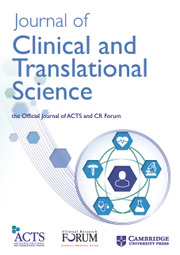No CrossRef data available.
Article contents
182 Examining the Feasibility and Acceptability of Data-Driven Outreach Using Geographic Information Systems to Address Racial Disparities in Fatal Opioid Overdose
Published online by Cambridge University Press: 24 April 2023
Abstract
OBJECTIVES/GOALS: This project examines the initial feasibility, acceptability, and appropriateness of using population-health data and geospatial information systems (GIS) technology to guide opioid overdose prevention in a Black community facing increasing racial inequities in fatal overdose since 2016. METHODS/STUDY POPULATION: We applied a mixed-methods approach, using GIS to examine hot spots of fatal opioid overdose among Black, adult decedents in St. Louis City and County, Missouri, derived from cause-of-death data from the Medical Examiner’s Offices from 2016-2021 (N = 1,612). Hot spot analysis was conducting using the Getis-Ord Gi* statistic. We then conducted a focus group with community-based providers in Black neighborhoods (N = 8) to assess the acceptability and appropriateness of mapping overdose data and to determine the utility of GIS for guiding decision-making in outreach activities aimed at overdose prevention. The focus group was recorded and transcribed for analysis to extract themes. RESULTS/ANTICIPATED RESULTS: Among 340 census tracts in the St. Louis region, 41 were statistically significant hot spots, indicating high clustering of fatal overdose. All hot spots were clustered together in North St. Louis, an area characterized by high racial and income segregation. Focus group participants reported potential pitfalls of GIS, including data inaccuracy for Black individuals and unwanted attention in hot spot areas (e.g., increased policing). Potential benefits included improved care coordination between organizations, assessing effectiveness of outreach interventions, and improving community-level awareness. Hyper-local neighborhood rather than regional maps were perceived as useful for outreach. DISCUSSION/SIGNIFICANCE: Artifacts of structural racism that drive Black opioid overdose deaths limit the utility of GIS to guide outreach in communities facing this systemic disinvestment. However, neighborhood-level GIS may serve as a tool for communities to build awareness and collaboration toward overdose prevention.
- Type
- Health Equity and Community Engagement
- Information
- Creative Commons
- This is an Open Access article, distributed under the terms of the Creative Commons Attribution-NonCommercial-NoDerivatives licence (https://creativecommons.org/licenses/by-nc-nd/4.0/), which permits non-commercial re-use, distribution, and reproduction in any medium, provided the original work is unaltered and is properly cited. The written permission of Cambridge University Press must be obtained for commercial re-use or in order to create a derivative work.
- Copyright
- © The Author(s), 2023. The Association for Clinical and Translational Science


